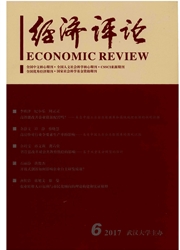

 中文摘要:
中文摘要:
从实践范式上讲,新结构经济学是续战后"结构主义"与"新自由主义"之后的第三波发展思潮。对应地,从理论范式上讲,新结构经济学是续经济学诞生后"选择科学"与"缔约科学"之后的"结构科学"。本文的主要工作则是采用一种(偏)微分方程思路下内生(总量)生产函数方法来解读新结构经济学的"结构科学"新范式:首先,试图通过比较不变与可变(总量)生产函数的增长核算和发展核算来豁清新结构经济学与目前主流发展思潮和旧结构主义发展思潮的实质性区别;其次,试图通过内生(总量)生产函数的方法比较基本的新结构(增长)模型与教科书中的新古典(拉姆齐)增长模型来说明缺乏结构的新古典理论只是新结构经济学的退化特例而已;最后,展望了如何在给定资源最优配置下求解最优生产函数这一新结构经济学核心问题的偏微分方程思路。在本文看来,新结构经济学已经开启了一场经济学的结构革命。
 英文摘要:
英文摘要:
In practice, New Structural Economics (NSE) is the third wave development thinks following the Structuralism and Neoliberalism after the WWII. Correspondingly, in theoretical paradigm, NSE is the structure science following the choice science and contract science in economics.This paper uses a way of PDE (Partial Differential Equation) to solve an endogenous aggregate production function to unscramble this structure science paradigm. Firstly, we try to compare the growth accounts and development accounts based on the invariability and the variability of aggregate production function to clear the fundamental differences among Structuralism, Neoliberalism and NSE.Secondly, we try to compare the neoclassical model (RCK) and NSE model based on the invariability and the variability of aggregate production function to state the fact that the neoclassical economics without structure is only the special case of NSE with structure.Lastly, we outlook the thinking how to use generally the PDE to solve the optimal production function given the optimal allocation of resources that is the core problem of NSE.From this paper's perspective; NSE has opened the economic structure world in economics.
 同期刊论文项目
同期刊论文项目
 同项目期刊论文
同项目期刊论文
 期刊信息
期刊信息
